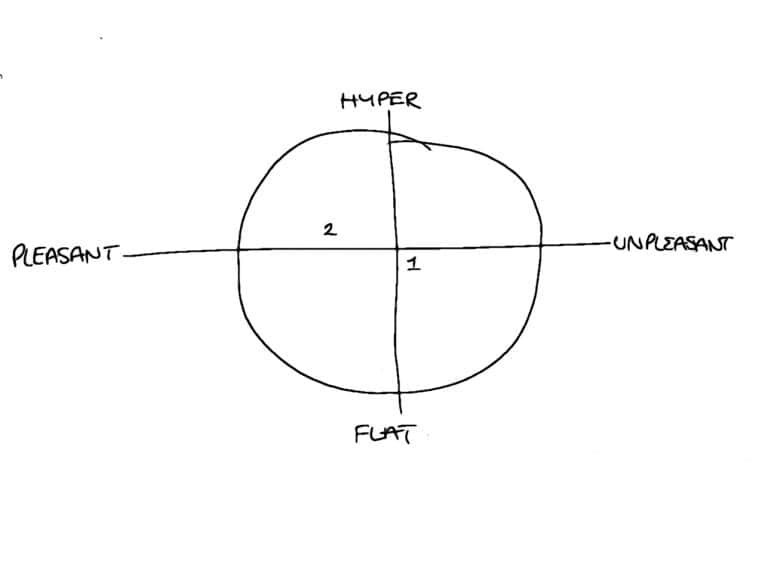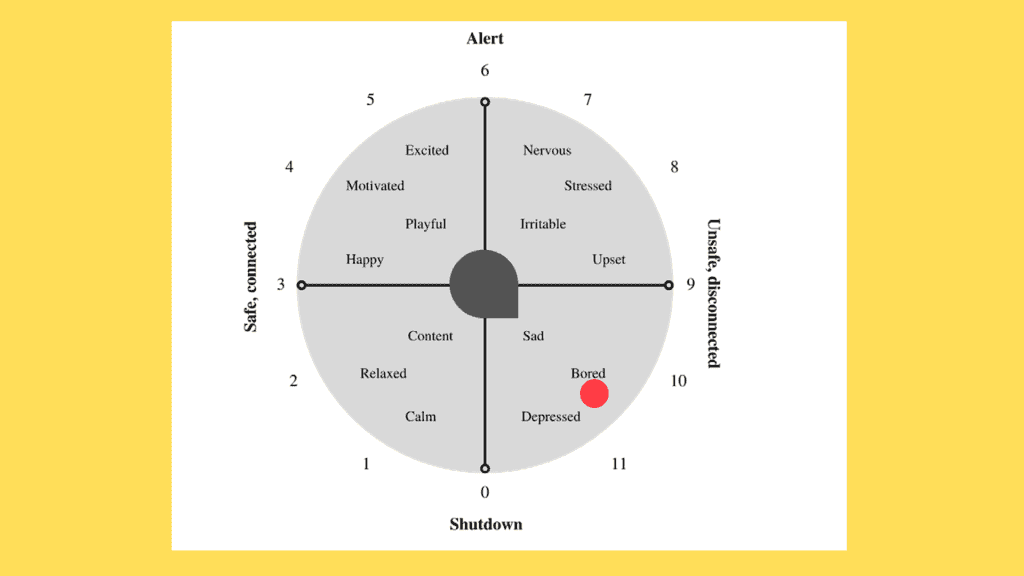A method I use in my therapy practice and for my own emotional processing
How do you process emotions when there is a lot to offload? I thought it might be helpful if I shared one of the tools I use as a therapist. This technique that helps me to offload and process the week involves expressive writing in a structured way.
Offloading strategies
We all have strategies, tools, and techniques that work for us and help us to decompress. These include playing sports, talking with friends, offloading to those close to us, watching a match, and engaging in mindful activities or hobbies that give us space and a different perspective. These can all help us when it comes to processing emotions.
Using Expressive Writing and The Morning Pages as methods for processing emotions
As a therapist, I often have much to offload and process on top of my other responsibilities. For over twenty years, I’ve been using a combination of Julia Cameron’s ‘The Morning Pages’ and James Pennebaker’s Expressive Writing technique. As good as the Morning Pages are, I have often struggled to fit them into my week. So, over the past four years, I have been trialling different writing days, times, and lengths to see what works best for me.
How long should we write for?
In February this year (2024), Professor James Pennebaker, the founder of the Expressive Writing technique, held a training course for CBT Therapists. One of the things that stood out to me, as one of the participants in that course, was what he said about the duration of writing. He shared how his research had shown that this technique could still work even with very short periods of writing, even five to eight minutes! Hearing him say this validated what I had found when using the method. My duration at that point was eight minutes of writing. But after Professor Pennebaker’s session, I began trialling a double writing session method where I wrote for seven minutes, paused, and then wrote for another seven minutes. The first section was for offloading, and the second was for processing what had been written.
Why a second period of expressive writing?
Professor Pennebaker stated that his research had found that if people only used expressive writing to offload or to ‘brain dump’, this wasn’t always as helpful as if they then went on to process what they had offloaded. What this means in practice is that you could just brain dump onto the page, as Julia Cameron asks us to do in the morning pages, but it is only when you go deeper and reflect on what you have written that the benefit of this practice emerges. For example, you might notice patterns or habits of behaviour. You might notice that a similar issue has happened before. You might discover insights that were not obvious before. In this space, you can then think about what you would want to do next if there was something you wanted to change.
The importance of processing
This ‘processing’ is where the magic can happen. It can provide fresh insights, offer a new perspective on an issue, and perhaps give a deeper understanding of how or why we feel the way we do about something. It could also lead us towards integrating something which had been hard to grapple with previously, or it can lead us towards compassion and acceptance for ourselves. I believe that this processing is why Julia Cameron asks us to write three pages long-hand in the morning pages. She wants us to go beyond the surface of an issue. When I use the morning pages, I find there to be two parts to the process. There is an initial ‘dumping’ or offloading section, and then, around halfway through, just after the point at which I have to push myself to keep writing because it can feel like I have come to a dead end, I seem to write down to a deeper level. This is where I find the gold. The nuggets of insight, clues as to what I was really bothered about, patterns that I hadn’t noticed before.
This brings me to the method I find works best for me. It isn’t the only way. You might want to experiment, as Professor Pennebaker encourages us to do. He has stated that no one time period works for everyone when it comes to expressive writing. You have to find what works for you, but this is my preferred method of offloading and processing, using expressive writing.
Chart feelings
First, I get a baseline for what I am feeling. I draw a circle, then a line through the circle, from top to bottom, and then a line from left to right. See below:

At the top, write Hyper; at the bottom, write Flat. On the left, write Pleasant, and far right, unpleasant. You could fill in the feelings in the circle. For example, flat and unpleasant would be depression, and hyper and unpleasant would be panic or anger. Pleasant and hyper could be excited. Flat and pleasant would be calmness. There are the extremes at each end of the line and in between are the more subtle feelings.
Before my writing session, I put a number 1 somewhere in the circle for how I feel now. In this example, I felt a bit flat and unhappy (I’d had three things happen that made me feel loss, disappointment and rejection).
Set the timer

Then, I set my timer for 7 minutes.
Write for 7 Minutes
I write for 7 minutes about what is present for me right now or whatever comes up when I think about the past week. I find this technique helpful on Sunday to help with that Monday feeling.

It is important to keep it recent. This is about offloading and processing what the mind is currently managing. It isn’t therapy. It is a short-term offloading and processing technique. *
I keep writing with whatever is on my mind, even if it seems irrelevant or I don’t know how I feel about it. I also notice any sensations in my body and include them in my writing. I note down thoughts that I am having. I try not to judge myself, but if I do have judging thoughts, I write these down, too. Sometimes, I need to remind myself to be a bit kinder if I am being too self-critical.
Remember, this writing is not to be shared. It does not have to be grammatically correct or have a perfect structure.
Pause and Write for another 7 Minutes

When the time is up, I pause and breathe. Then, I set the timer for 7 minutes and write again.
This time, I reflect on what I have offloaded. I write what comes up for me about this. I write about whether I notice any patterns or habits or whether I have felt this way before. I notice if I have any thinking patterns like all-or-nothing thinking or mind reading – which is thinking that I know what other people think about me. I notice what feelings the issue is bringing up and reflect on why that might be. If I am being hard on myself, I might ask myself, “What would a compassionate and supportive friend say if they were in that situation?”
If I have nothing to write about in this second 7-minute session, I might move on to another issue from the previous week. Or I might start planning out what I want to do or change based on any insights that have come up.
Then, I go back to my feelings circle and chart where I am in the circle after the writing. I notice if I feel a bit more or less activated and where the feeling is on the line between pleasant and unpleasant. I put a ‘2’ here, but you could use dots like in the images below. I created these graphics in Canva. This circle of feelings model is a representation of the affective circumplex model by Posner et al (2005).



If I feel like I am still in the middle of processing at the end of the second 7-minute session, I might set a timer for another 7 minutes.
That’s it. That is my weekly process. Have a try to see if you find it helpful.
There is a large body of research into expressive writing as a technique, but as Professor Pennebaker points out, it doesn’t work for everyone. It can, however, be helpful for some of us. Professor Matthew Lieberman has also done a large body of work on ’emotion labelling’. He has found that it can be therapeutic to put our feelings into words and that labelling our emotions can activate the parts of our brain that help us to objectify but also integrate and process these feelings.
CBT-Enhanced Expressive Writing Course
If you would like to learn more about expressive writing, and be guided through how to use this as well as learn some powerful CBT strategies for managing emotions. Have a look at my online self-paced course.
CBT-Enhanced Expressive Writing Course
A Powerful blend of expressive writing, CBT tools and therapeutic sound to process emotions.
Master your emotions and unlock the healing power of writing.
This unique course combines the transformative practice of expressive writing with proven Cognitive Behavioural Therapy (CBT) techniques and the soothing benefits of therapeutic sound.
Designed to help you process difficult emotions, manage day-to-day feelings, and build emotional resilience, this course provides practical tools and guidance for your personal growth and well-being.
What You’ll Learn:
- The art of expressive writing: Discover how to write about challenging and traumatic experiences in a way that promotes emotional release and healing.
- CBT tools for emotional management: Learn strategies to process and regulate the feelings that arise during writing.
- A four-part module on writing about traumatic events
- Everyday emotional resilience: Gain skills to manage your day-to-day emotions using expressive writing as a therapeutic outlet.
- The power of sound for healing: Experience how music and sound can deepen your emotional processing and enhance your writing practice.
OVERVIEW:
- 29 Videos
- 50-page Course Book & Extra Worksheets/Handouts
- Access to my Expressive Writing Community for advice, info, support, sharing and community.
CONTENT:
- Expressive writing history and practice
- Expressive writing, diary writing and free writing
- Expressive writing and The Morning Pages
- Writing practices
- Managing & Processing Emotions
- Interoceptive awareness: a new way of managing how we feel
- The Hot Cross Bun and how to unpack and process how you feel
- How to write about traumatic events
- Constructing a Personal Processing Plan
- Adding music to our expressive writing practice
- Binaural sound
- Bilateral Sound
- General therapeutic sounds & playlists
Why This Course Matters:
Transform how you process emotions and overcome patterns that are keeping you stuck.
Feel empowered to take control of managing the feelings you may have following traumatic or difficult experiences.
It offers you an alternative to talking about your feelings, for times when we find speaking difficult.
*A note about traumatic experiences
If something traumatic happened over the past week, it is important not to overwhelm your brain by trying to process it too soon. In this case, you would only write about how you feel in this moment. For example, the things you need to do today, things that might be niggling you, who you could speak to for support. What things might comfort you now? Where and who would be the best people to be with to feel safe, calm, and supported? This is what your system will need now, rather than rushing to process the trauma.





